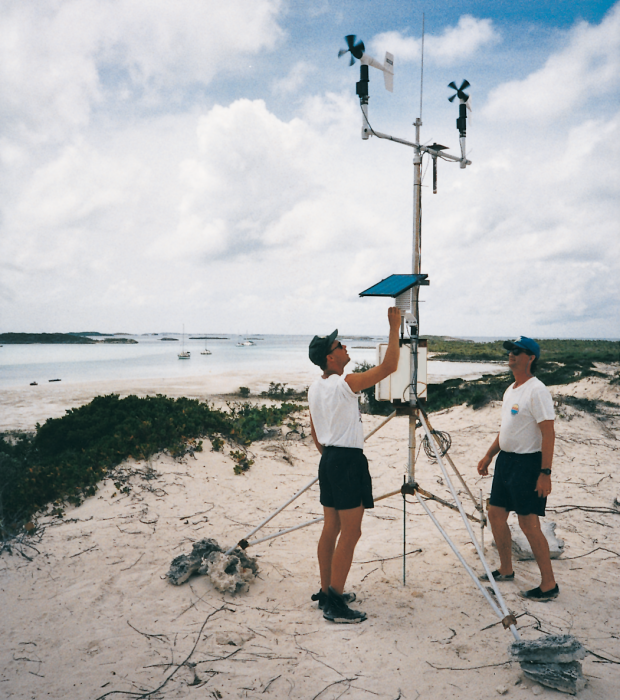
カリブ海海洋研究センター (CMRC) は、世界の海洋生物資源が直面している重大な問題に対処するために 1984 年に設立されました。CMRC は、海洋科学のフィールド研究とトレーニングを行う地域有数のセンターの 1 つであり、フロリダとバハマに主要施設、カリブ海全域に研究拠点を持ち、提携する科学者や大学を有しています。
1987 年、CMRC は、フロリダとカリブ海の主要な海洋生物種の豊度の変化を決定する重要なプロセスを調査および特定するための包括的長期プログラム「カリブ海および亜熱帯地域の漁業海洋学と加入 (FORECAST)」を開始しました。FORECAST プログラムでは、米国の 8 つの海洋科学機関の科学者が協力して、商業的に重要な 3 種の種 (クイーンコンク、イセエビ、ナッソーグルーパー) のライフサイクルに影響を与える気象学、海洋学、海洋生態学、漁業生物学を調査します。
ほとんどの海洋生物は、マングローブ林、海草床、サンゴ礁、外洋を海流が結び、海洋生息地の相互接続システムを形成する開放系で生息し、成長します。
クイーンコンク、イセエビ、ナッソーグルーパーは、その生涯を通じてこれらの生息地の間を移動し、産卵場で孵化し、時には数百マイルも海流に乗って漂い、その後海底に定着して成魚に成長します。
幼生の移動は嵐、風、海流に大きく影響されるため、FORECAST の主な焦点は、海洋力と大気力がどのように沿岸の生育地域への幼生の移動を制御し、特定の生息地への巻貝、ロブスター、ハタの供給を決定するかを知ることです。
Campbell Scientificの CR10 ベースの気象ステーションがいくつか設置され、FORECAST プログラムの主要な研究場所であるバハマのエグズーマ湾の大気の力の監視に使用されました。遠隔地に長期間気象ステーションを設置できる機能は、このプログラムにとって大きな強みです。キャット島とエルーセラ島の気象ステーションは、ダウンロードされるまでに最大 5 か月間データを収集しました。
気象観測所からの結果、網曳航、流速計データ、および現場サンプルと併せて、産卵場所から育成地への輸送が成功するかどうかは、好ましい気象条件だけでなく、幼生が育成地に安全に定着する偶然の出現にも左右されることがわかりました。
これらの要因と海洋動物の個体群動態をより深く理解することは、魚介類の地域的供給を予測する上で不可欠です。これにより、海洋環境を保護するための効果的な政策を策定できるようになります。FORECAST は、NOAA の National Undersea Research Program によってサポートされています。
ケーススタディの概要
アプリケーション
3種の海洋生物の研究を支援するため、カリブ海の気象パターンを監視場所
エグズーマ湾、バハマ寄稿者
Heinz Proft, Caribbean Marine Research Center, Vero Beach, Florida参加団体
カリブ海洋研究センター計測項目
気温と相対湿度、降水量、日射量、風速と風向PDFで見る